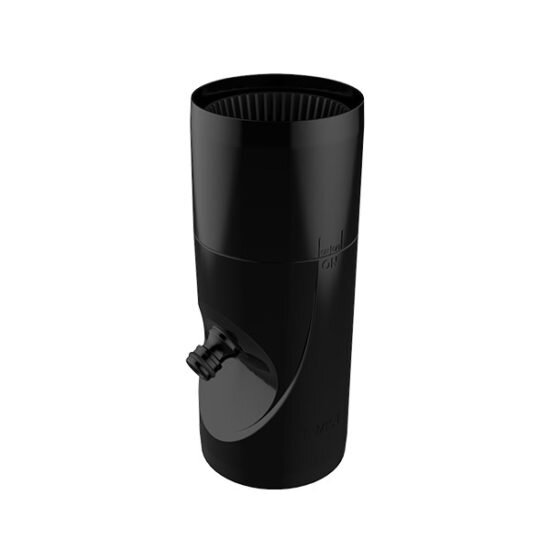Rainwater tanks also work for emergencies
By Terry Snow
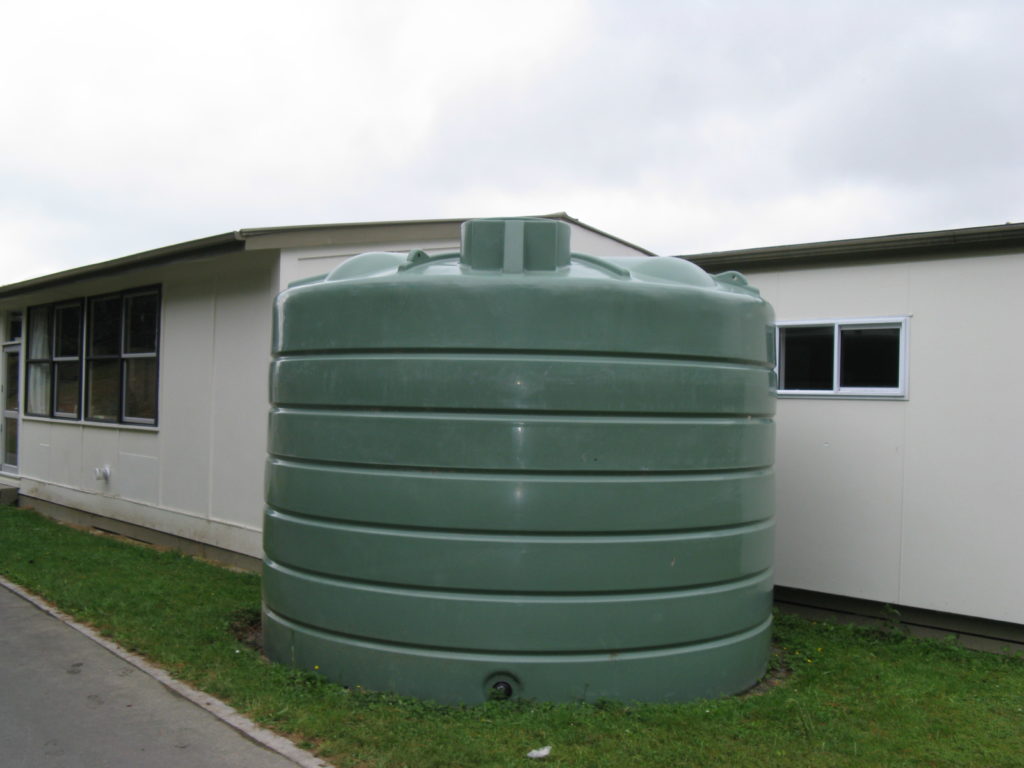
After the earthquakes in Christchurch and Japan, and after any emergency or natural disaster, an immediate call comes for supplies of water. Vital water is often the most instantly affected central supply when pipes and supply channels crash and the search for this life-sustaining substance water is on immediately.
Stan Abbott, Director of the Roof Water Research Centre at Massey University Wellington and an acknowledged expert on roof-harvested rainwater, has frequently advocated the use of rainwater tanks for many reasons to do with supplementing the water from mains, providing households in areas of scarce supply or ensuring those in the country have a self-supporting water supply.
Now one of the compelling reasons for backup water—an emergency or disaster—has come to the fore.
Says Stan Abbott “I definitely wonder why after September’s 2010 earthquake in Christchurch people did not clamour to put in home water tanks? They were waiting in queues for water in the streets. Why not stock up on water at home?”
The timeline tells the story. February 22, 2011, Tuesday, 1.15 pm, 6.3 earthquake in Christchurch. February 23, Wednesday, News 4:52 am: Around 80 percent of Christchurch is without water.
It has been a few years since The Shed magazine last went through the practicalities of installing a rainwater tank for roof-harvested water, together with the requirements for good storage and filtering.
“There’s been heaps of research since then about the benefits of rainwater tanks and how best to use them,” says Abbott.
“Rainwater tanks are for people with remote access to water, and for rural areas where it is their only supply and you can get tanks up to 450,000 litres. We are now encouraging people in the urban environment to install rainwater tanks for water supply for the garden, to top up their own water supply, to save money but also for an emergency, for firefighting, for earthquakes.”
He says with political thoughts now turning to the possibility of an earthquake affecting Wellington, he says those who say the capital’s reservoirs have an automatic shutoff and will be fine are not realistic. He says that most of the region’s reservoirs are concrete and are likely to collapse in a strong earthquake.
“Yes, rainwater tanks both pre and post-earthquakes are a must. This is another major benefit of rainwater tanks. The Porirua City Council has now installed 42 of the 25,000-litre rainwater tanks in the district in strategic places like schools and the grounds of church halls. These tanks are for emergency use only—they have locked access covers and taps have been removed. They will be used in firefighting and for supply, obviously, in the case of an earthquake cutting off the centrally supplied mains water.
“This is an excellent idea, given that during large earthquakes the water infrastructure will be compromised (as for example in Christchurch) and many people will be without water.”
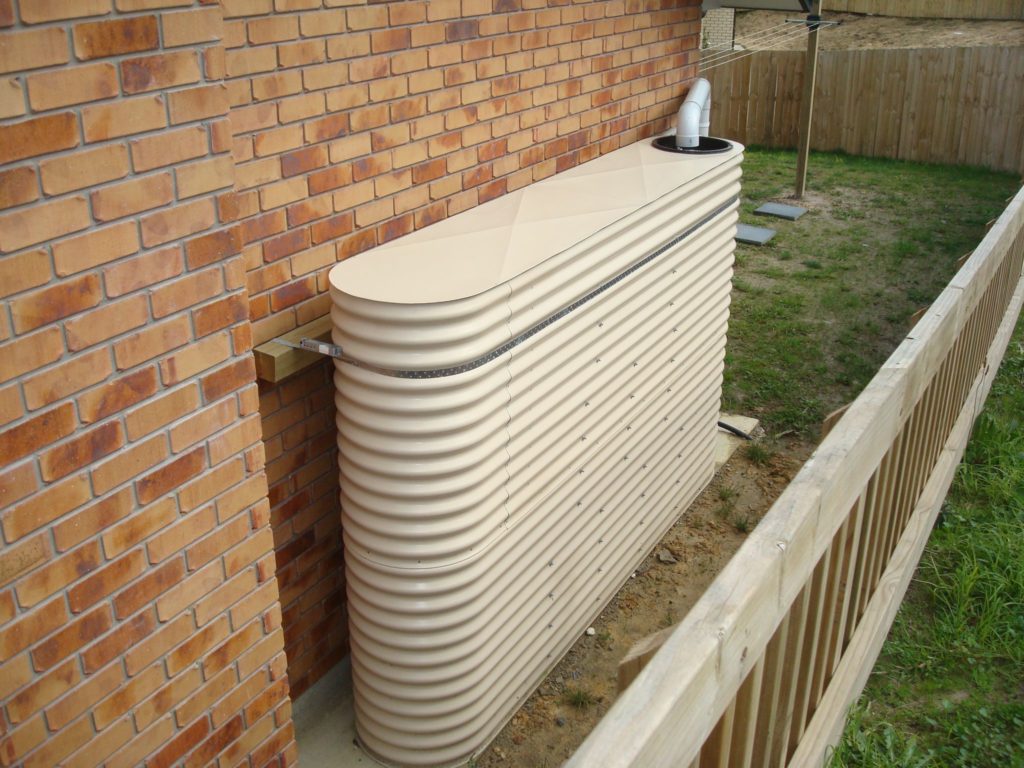
Contrary to reports, he says, all the tanks didn’t fall over in the Christchurch earthquakes. He knew of only two rainwater tanks that collapsed during the September earthquake in Christchurch, a large timber tank and a concrete one, which he thinks was probably an old type that was not steel-mesh reinforced. Plastic tanks might have moved but not a great deal.
“I doubt whether you will get much movement with a rainwater tank if it is properly seated on a sand base and seismic restraints would only really be necessary for smaller, slim-line tanks.”
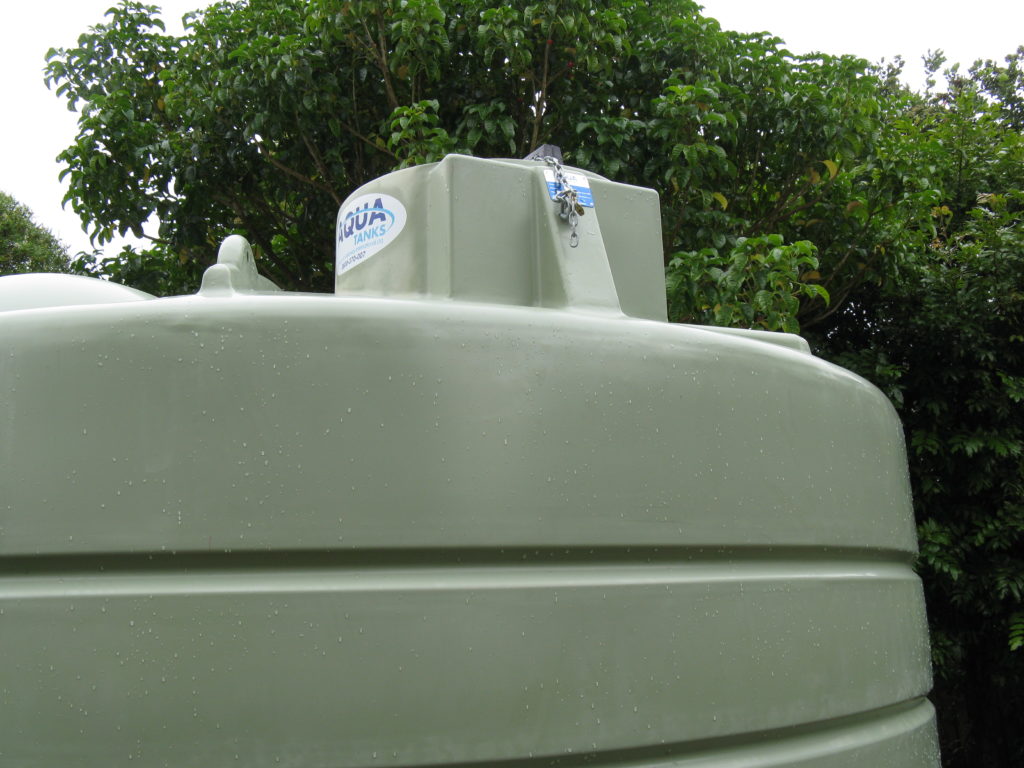
In Wellington, there are about ten emergency community water tanks and they are trying to get more quickly but they need a website for these sites to tell people where they are, says Abbott.
The urgency of considering water supplies in an emergency is underlined by the fact that Massey and its roof water research is under contract to GNS Science, the Institute of Geological and Nuclear Sciences, to look at the types and benefits or rainwater tanks pre- and post-earthquakes.
Stan Abbott asked the question “Rainwater Harvesting in Urban Environments—Why Not?” in a paper to The New Zealand Water and Wastes Association’s 50th Annual Conference, ironically enough in Christchurch.
Supporting the obvious back-up now in emergency situations, the benefits when rainfall is sufficient were enumerated as:
* In many rural and regional areas and some fringe areas without access to mains water, rainwater tanks are essential for household water supply;
* Rainwater can supplement mains water supply and be used for washing, toilet flushing, garden watering, swimming pools, and for farm purposes in rural areas;
* Rainwater can reduce the annual water bill in areas where water is metered;
* It can improve the taste of their water in areas of poor water quality;
* It can improve water security of supply and consumer asset protection (e.g. lawns, gardens, and motor vehicles) especially during times of water restrictions.
The potential community and environmental benefits of rainwater tanks, however, are not universally welcomed by local councils despite the possibility of households supplementing their own supplies which might reduce or delay the need to build and maintain other expensive water infrastructures such as storage dams, pipes, sewers and treatment facilities.
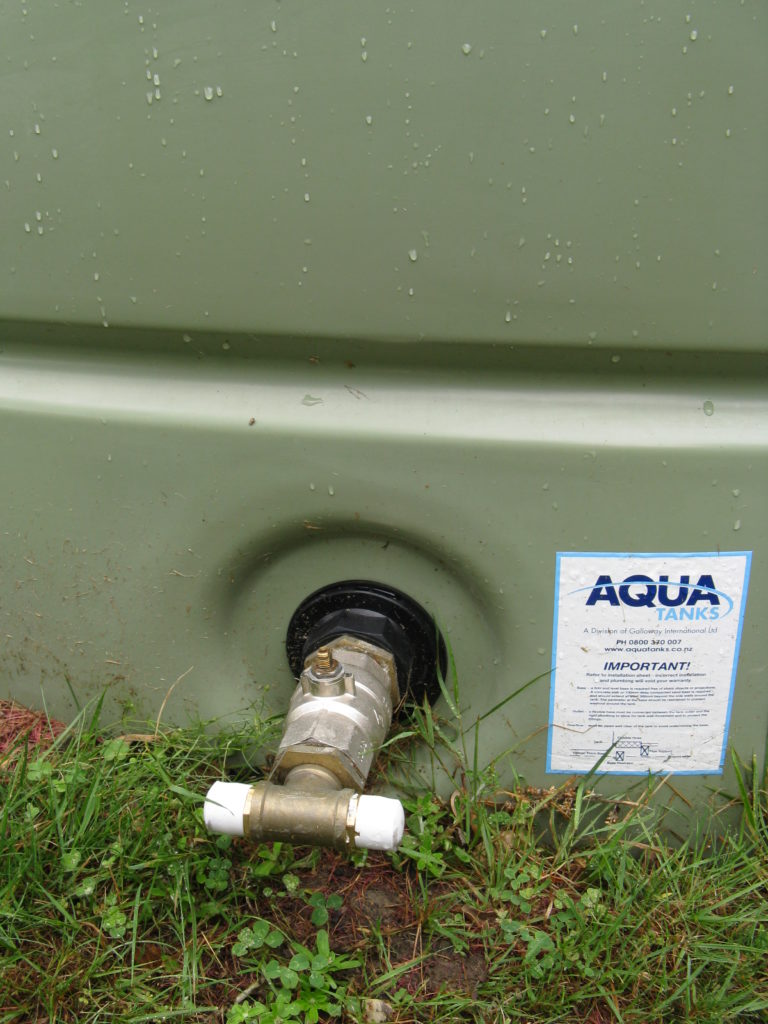
TANKS
The tradition of concrete tanks in areas where houses have no piped supply or rural corrugated iron tanks without a lid—floating possums and rat carcasses have been known—have been outstripped by the many-coloured modern shapes available today. The common materials are concrete, galvanised steel, and polyethylene. They can be round, oblong, oval, fat or slim, tall or flat. There’s even a tough bladder-style flexible “tank” resting flat in a soft stretcher and suitable for under the house or deck. A series of bladders can be linked for a capacity of up to 30,000 litres.
The tall, oblong tank panels can be bracketed along your fence line (these are 220-litre capacity) and connected like modules for greater capacity. They can also be painted to match your backyard colour scheme. The slimmest corrugated polyethylene tanks, long and oval, are only 190mm wide and can hold up to 3000 litres.
Tanks that will be buried usually need to be of concrete and require a building consent. Specialist tanks companies are now finding major chains selling small (600-litre) plastic rainwater tanks as the trend catches on.
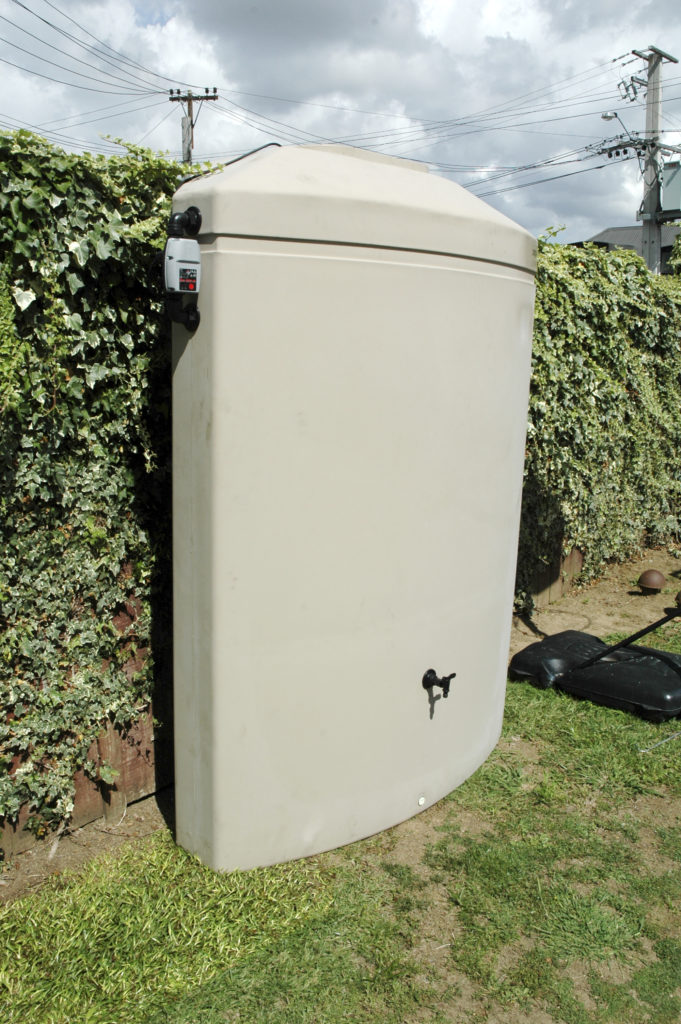
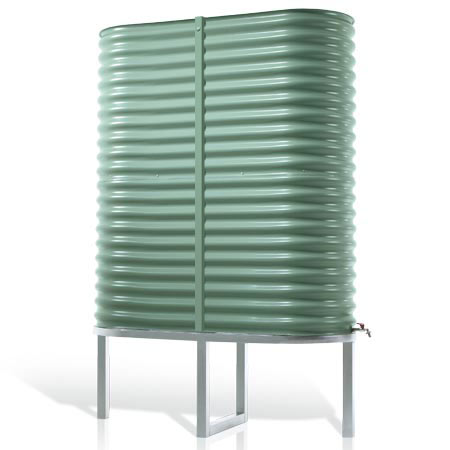
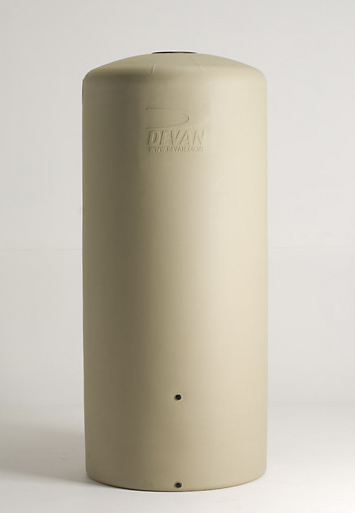
Councils
A major impediment to the increased uptake of rainwater harvesting is the fact that the policies of New Zealand local authorities councils towards rainwater tank design and installation is not consistent across the country. Some councils have relaxed requirements for connecting rainwater tanks to the mains water supply to make buying rainwater tanks more attractive. Some regional health services put restrictions on possible indoor uses of rain tank water because of the quality of roof-collected rainwater.
Cross-connection of the rainwater tank’s plumbing to the mains water supply is usually only permitted if back-flow prevention devices are installed to prevent the possibility of water from the rainwater tank entering the mains supply. However, some local authority regulations expressly forbid the connection of rainwater tanks to the drinking water supply if mains water is available, but do allow separate connections for other indoor uses such as using the rainwater to flush toilets.
Currently, there is conflicting advice regarding the connection of rainwater tanks to the hot water system. Some councils have no policy, some have explicitly recommended against connecting rainwater tanks to the hot water system while others require all new dwellings to install a rainwater tank that is connected to one or more specified areas of the house, one of which is the hot water system. Check with your local authority for regulations specific to your region.
ONEWHERO SCHOOL
At the 460-pupil Onewhero Area School, the recently installed automatic filtration system for their tank water takes care of a different problem — bore water with its share of minerals. Plumbers have installed a double system. The two jumbo fibre filters, one of five microns, the other of 10 microns, and a UV filter lamp are doubled up for security and for cleaning with another two jumbo filters and UV lamp.
The school is required to submit water samples to a laboratory for testing each month and send the results to the Ministry of Education. Property Manager Dave Neal says they have a 99.9 percent purity report.
The water which supplies the school, local hall, staff houses, and 300,000 litre swimming pool used to be dosed manually before the filtration system was put in.
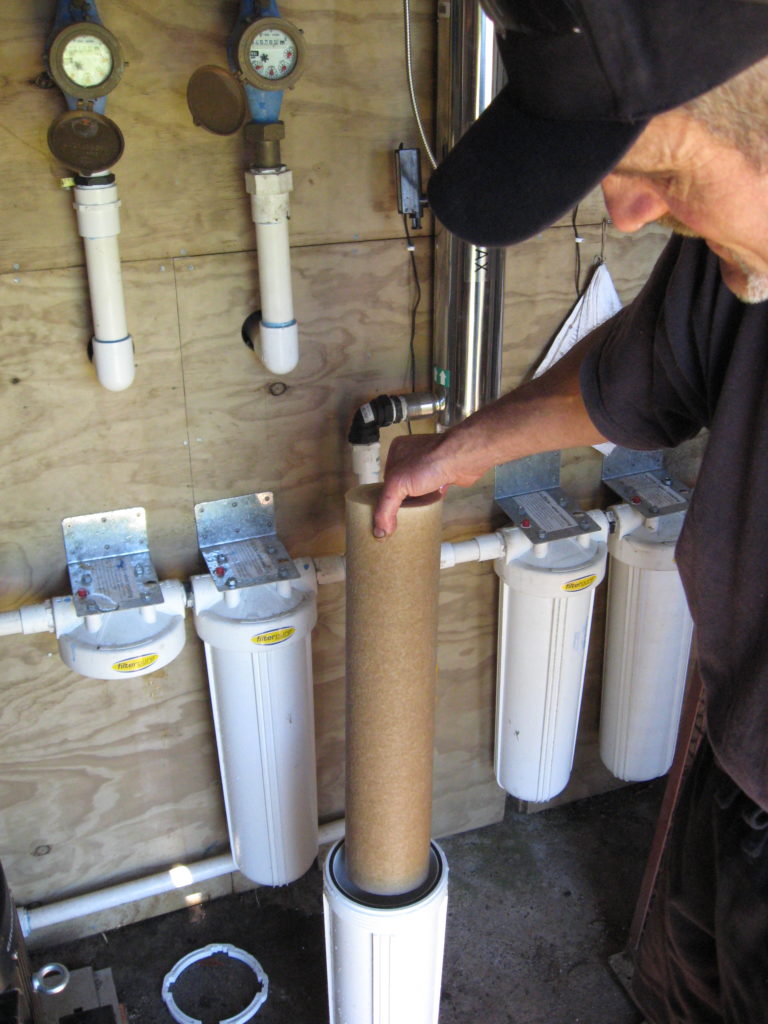
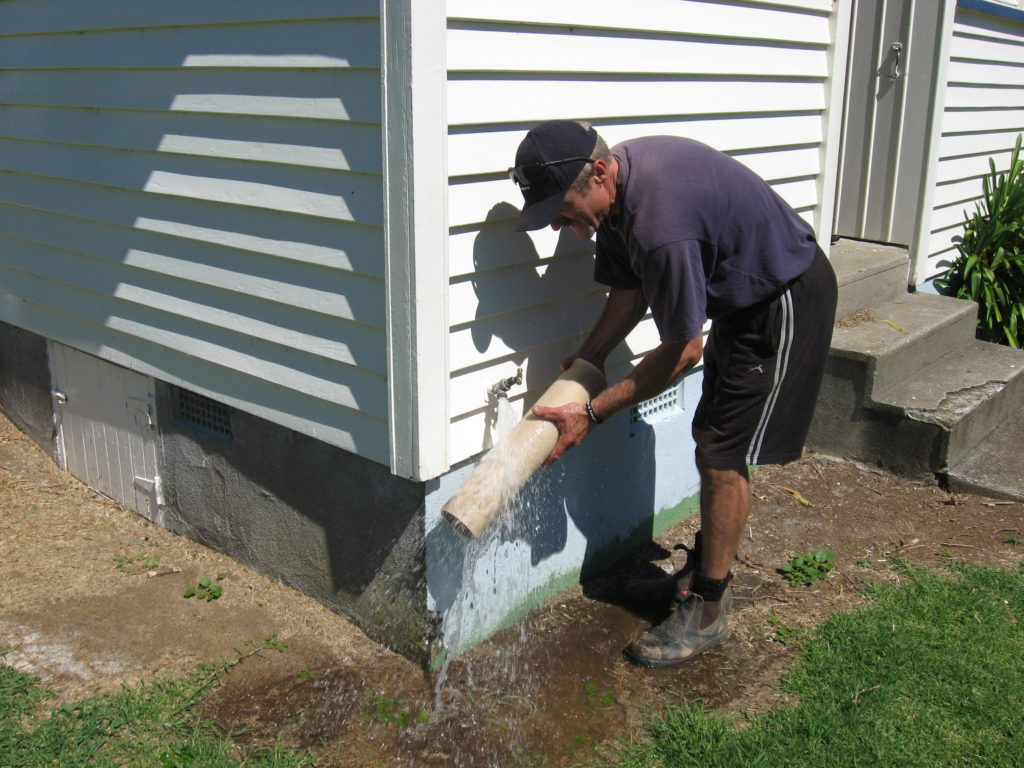
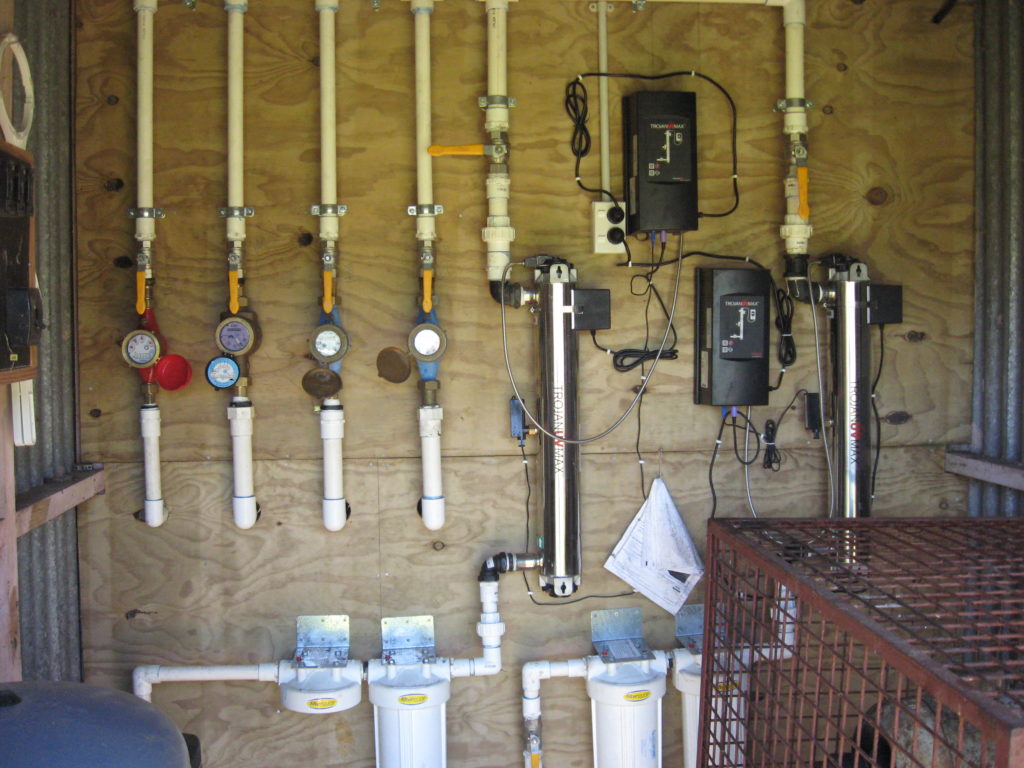
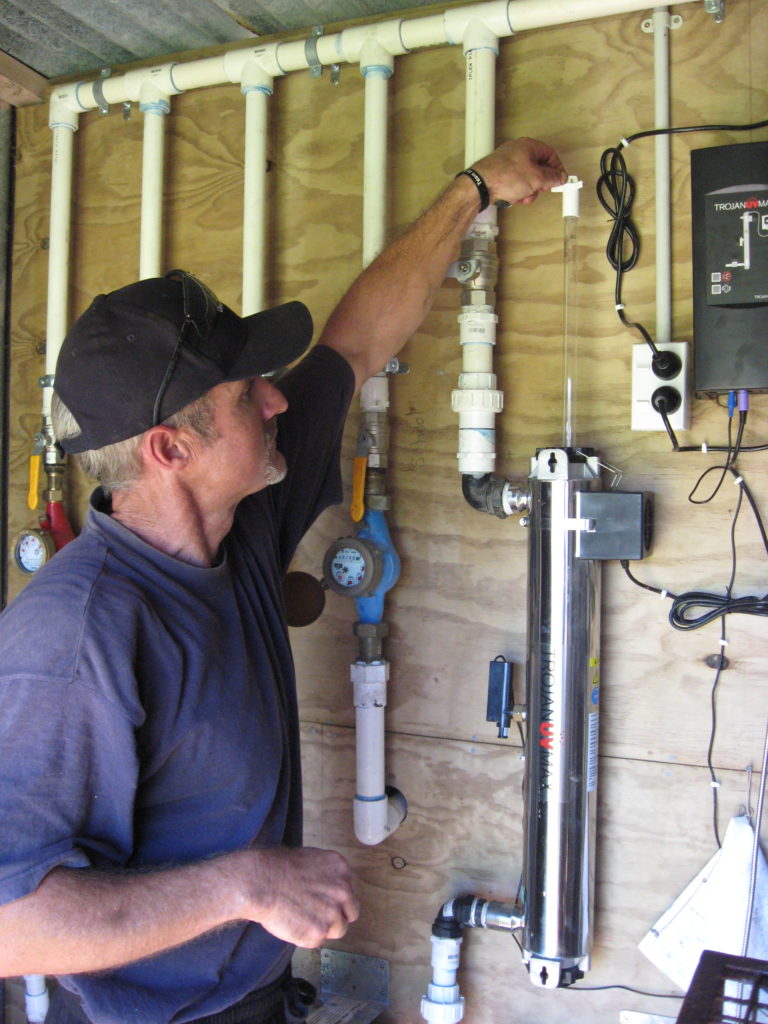
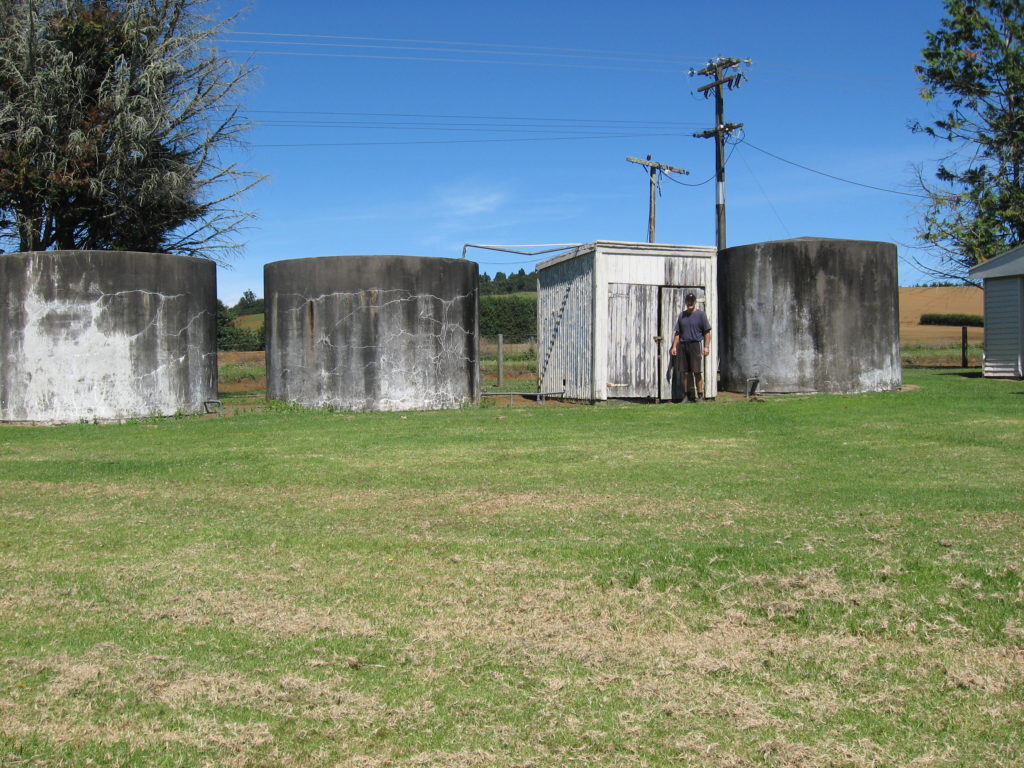
Dual system
However, where a dual rainwater/mains water system is possible, ideally it should operate automatically without householder intervention. Two systems are commercially available in New Zealand for integrating rain tank and mains water supplies. The first system is a trickle top-up system that uses a float in the tank to trigger the input of mains water in order to maintain a desired minimum level of water in the tank. During dry periods the tank will contain a mixture of rainwater and mains water. The second system uses a bypass valve that switches from the rainwater supply to the mains water supply whenever the rainwater is not available through the use of a pressure-triggered solenoid valve. In this system, mains water does not enter the tank but is diverted past the tank when required.
Quality
Among the issues with rainwater tanks, water quality is an essential consideration.
In a five-year Massey University study surveying the quality of roof-collected rainwater from samples of 560 private houses, at least half of the samples analysed exceeded the acceptable standards for contamination.
There was evidence of heavy fecal contamination, most likely from birds, frogs, rodents and possums, and dead animals and insects, either on the roofs or in the gutters or in the water tank itself. Many of the roof water supplies surveyed revealed deficiencies in the use of rainwater catchment systems and components.
There was evidence of lack of maintenance; inadequate disinfection of the water; poorly designed delivery systems and storage tanks; and failure to adopt even simple physical measures to safeguard the water against microbiological contamination.
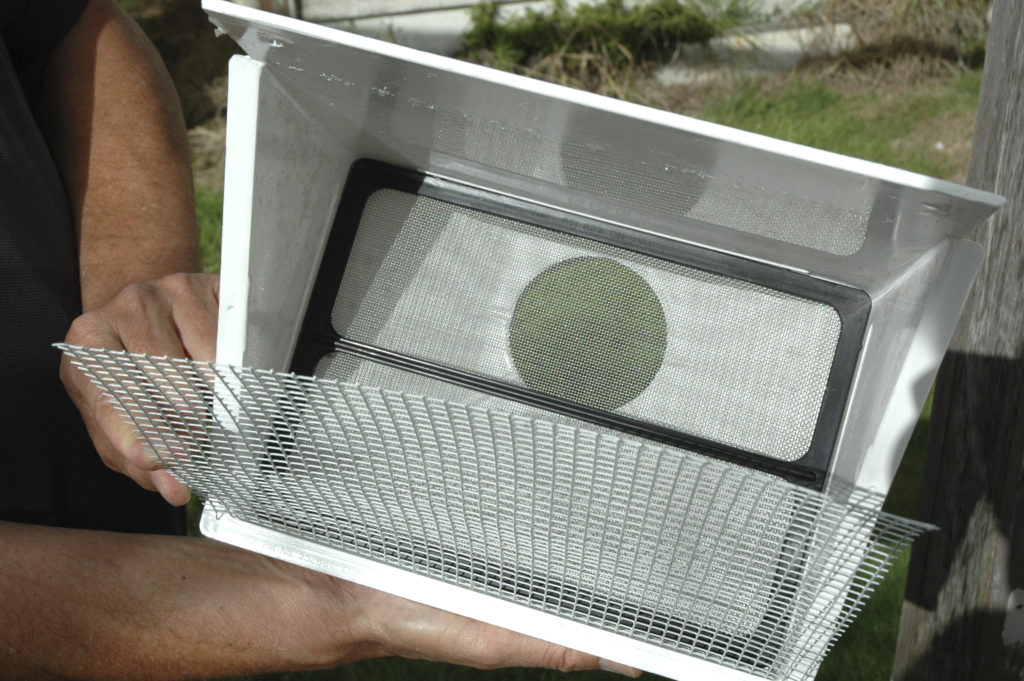
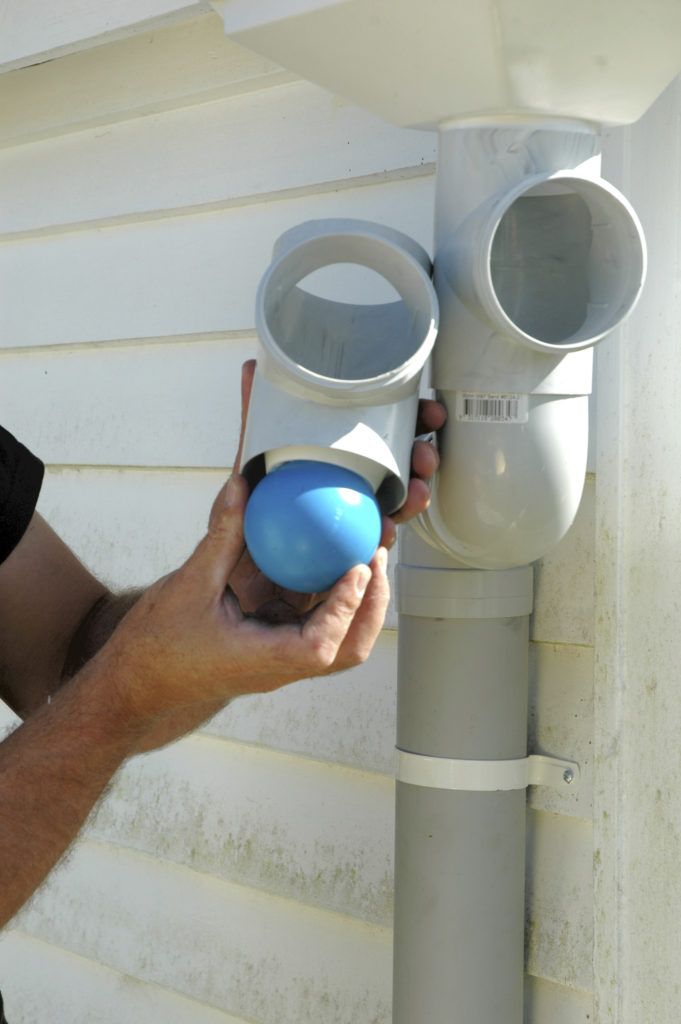
Filtration
There are many measures for ensuring water quality from
* installing gutter guards or screens in the downpipe rain heads or other suitable leaf and debris protection devices on each downpipe;
* a first foul flush diverter to prevent contaminated water entering the tank;
* a “calmed inlet” pipe into the rainwater tank so that the water enters the tank through a “U” bend to avoid the disturbance of any sediment in the bottom of the tank;
* a floating valve draw-off pipe in the tank to take water from near the top of the tank;
* a tank vacuum system that automatically siphons off the sediment from the bottom of the tank if and when the tank overflows.
Additional water purifying equipment can include a 20μm washable cartridge filter, a UV steriliser, and an activated carbon under-bench filter where the tap water is drawn off.
Stan Abbott says that floating out-take pipes must under no circumstances be used without a calmed inlet pipe otherwise you are simply siphoning off the dirty incoming water from the top of the tank. He also says that suspending a bag on its own in the water inside a rainwater tank is downright dangerous and should be avoided at all costs. Regardless of the pore size of the bag (usually between 25 to 50 microns diameter), microbial life will thrive exponentially in the moist conditions created by suspending the bag in the water. Even large organisms like Giardia (8 microns) and smaller bacteria like E.coli (2 microns) will infuse into the water outside the bag in the tank. Frequent cleaning of the bag will not lessen the health risk. He feels strongly that these bags should be banned.
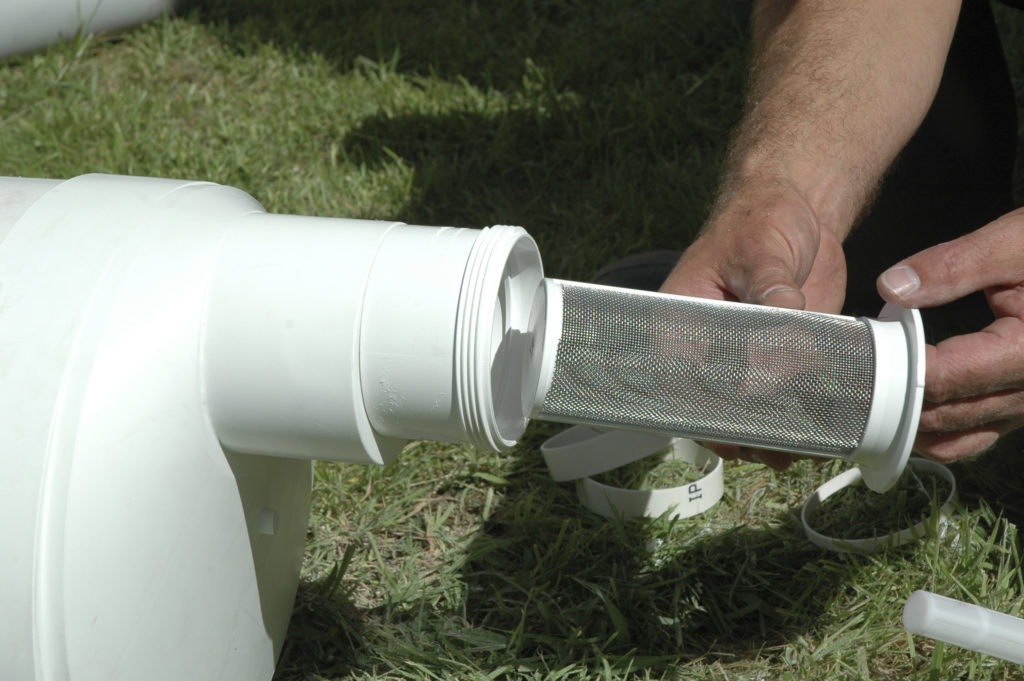
First flush diverter
In a systematic evaluation of measures for improving the rainwater quality, the Roof Water Research Centre in Wellington found spectacular improvements in the water quality in the rainwater tanks linked to first flush diverters. First flush diverters are devices that minimise contamination of the rain tank water by diverting the first amount of roof rain with the dust, debris, bird and animal droppings, etc away from the tank. A first flush diverter will also minimise ash, heavy metals, and chemical residues entering the tank.
The Roof Water Research Centre recommends that as a minimum all roof water supplies should have a first flush diverter because the longer the dry period in between rainfall events, the greater will be the number of pollutants deposited on the roof surfaces.
A rule of thumb is that the amount to be diverted should be the equivalent of 2 mm of rain over the area of the roof. This means that for an average size roof area the amount to be diverted will be approximately 100 litres. Pollution influences and roof catchment size determine the volume of water diverted but the Roof Water Research Centre recommends a minimum of at least 25 litres of roof water should be diverted.
Any roof water collection area which might be near sources of contamination with organic material, dust, ash, sand, salt, or airborne chemical residue, should have a first flush diversion system installed.
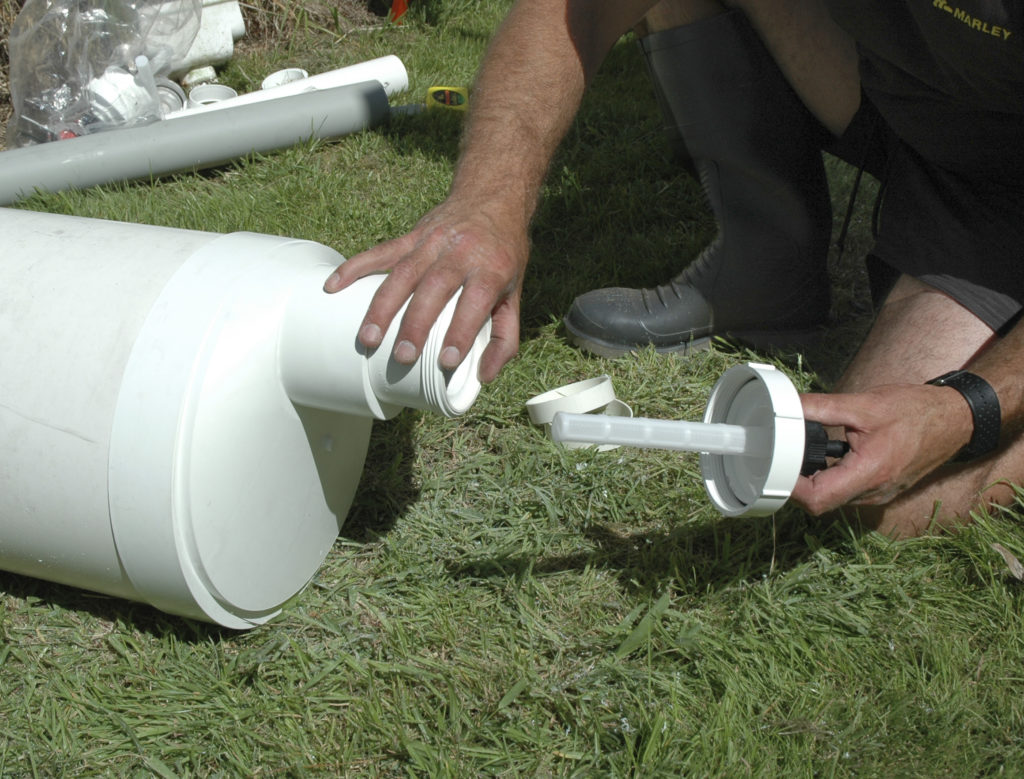
FIRST FLUSH DIVERTER
The first flush diverter downpipe has a seat at the top against which a floating ball is pushed upwards by the first run of water down the pipe. Once the ball blocks the top of the downpipe, the water from the spouting flows past and onto the rainwater tank.
The water trapped in the downpipe then drips out over the course of several hours through the filter and washer in the drip system at the base of the downpipe.
A similar system operates with a large, independent 300 mm first flush cylinder. As water falls into the cylinder from the pipe feed to the rainwater tank, a plastic ball floats up to the sloped cap and then jams against the valve seat in the top cap. Water then continues to flows across the top of the cylinder into the tank.
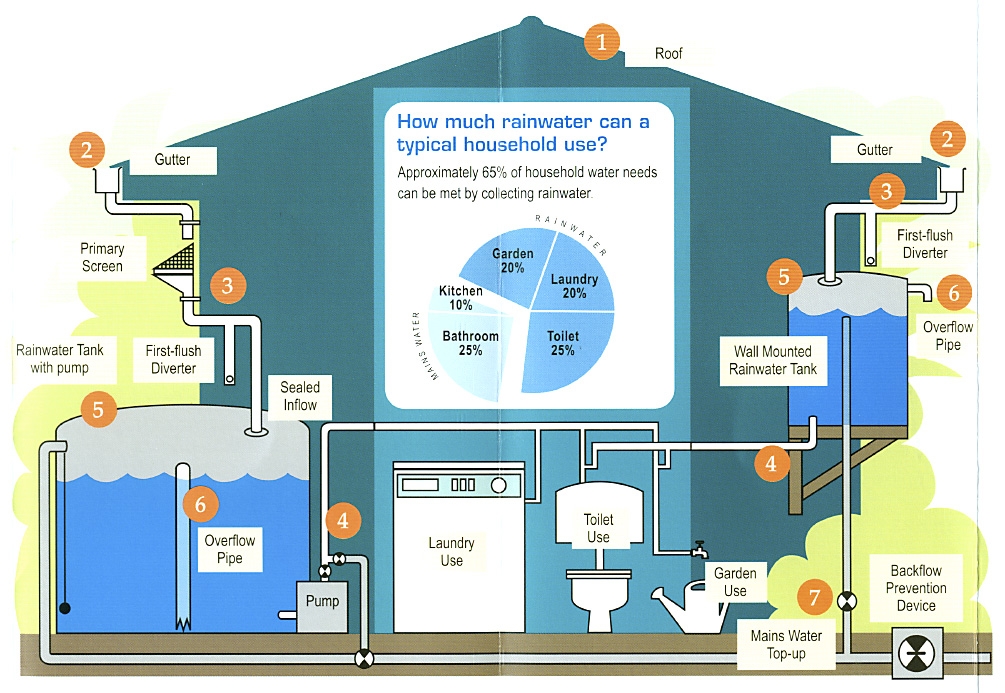
Costs
Factors affecting rainwater tank costs include not only the tank and installation but accessories such as back-flow preventers and first flush diverters, concrete stand, sand base or stand if required, pump, electric, and maintenance. But other than periodically checking and cleaning gutters and keeping the tank clear, well-designed systems are low-maintenance.
A controversial report for the Greater Wellington Regional Council (GWRC) on the benefit of rainwater tanks has been criticised for its flawed modeling and incorrect conclusions and understanding of the latest water systems which had led to inaccurate costings.
Stan Abbott, a Wellington resident, says in a paper on estimating the cost-benefits of a rainwater tank system that installation costs can vary considerably and depend on the rainwater system required. But his estimates are that the total cost including a tank could be no more than between $1600 for a small stand-alone system to $7000 for a large dual rainwater and mains water trickle top-up system. He calculates New Zealand suppliers sell tanks from around $600 for a 1000-litre polyethylene tank to $3500 at the top for a 30,000-litre polyethylene tank.
Beacon Pathway in plans for its NOW eco-friendly houses uses 2000-litre rainwater tanks (5000-litre tanks if a section has sufficient space) as sufficient to supply water for outdoor uses, toilets, and the washing machine.
For $1850, Abbott says he bought and had installed a household stand-alone garden watering and emergency supply system consisting of a 1000-litre polyethylene tank pump, first flush diverter, screened rain head, tank taps, and a scour valve.
Commenting on the GWRC report, GNS scientist and risk expert Jim Cousins told the Hutt News he was glad at least that the regional council has recognised the potential value of having tanks to cope with an emergency. People tended to underestimate the impact of a large earthquake when they could be without traditional network water supplies for between four and six weeks.
“Where will you get water from then, and how will they (the council) get water trucks around?”
Even the issue of getting water home once it’s collected from emergency tankers has to be faced. “You just imagine how far you can carry 20 litres of water.”
Cousins himself has a 900-litre emergency tank at home and it cost $400 when he installed it 18 months ago.
* Thanks to Stan Abbott, Director of the Roof Water Research Centre at Massey University, for providing substantial information for this article.
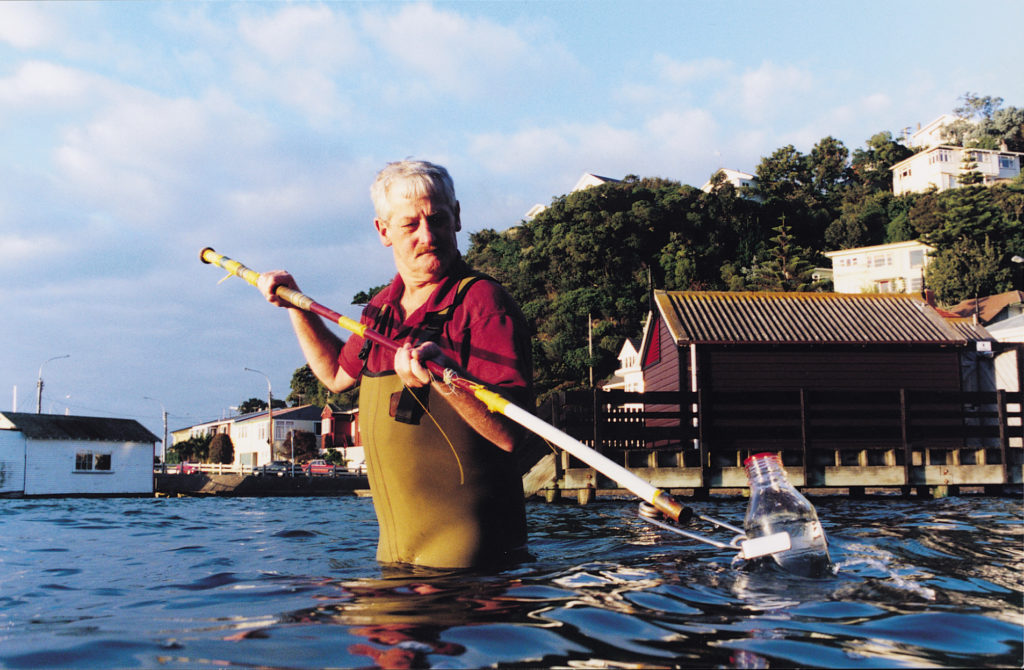
RAIN SAVES THE DAY AT EDEN PARK
A heading such as “Rain saves day at Eden Park” could mean luck for your team. But it can equally point to the savvy scheme for collecting roof-harvested rainwater from the new stands as part of the $190 million redevelopments of Eden Park. This water will be used for the toilets, especially in heavy demand during games, and at other times for functions, events, and staff toilets in the stands with a surplus for the gardens and plants (not for the turf on the playing pitch).
In fact, organisers predict potable water use will be reduced by 50 percent, thanks to this system. The rainwater will pour off the roof catchment area of 4450 square metres on the top of the South Stand and 2720 square metres from the East Stand roof. The reservoir to store this free water is a 72,000 litre concrete tank in ground in the South Stand and a 25,000 litre rotational moulded tank under the East Stand.

Engineers calculate that the total flushing water usage per event at full seating capacity will be 44,000 litres for the South Stand and 17,300 litres for the East Stand. The maximum water that can be saved at any event is the combined total of these figures, so up to 61,300 litres per event that is not needed from the town water supply.
The engineers point out that this is based on best-case scenario, assuming the tank is full with the stormwater before the event.
The tanks are also filled with potable water when needed. There is a mains feed and a gauge in the reservoir which makes the mains kick in when the tanks do not have enough water from rain. There are also two 25,000 litre potable water tanks in the South Stand that can be switched in to act as buffer tanks to manage the heavy water demand, particularly at half-time during an event with any capacity crowd of 50,000.
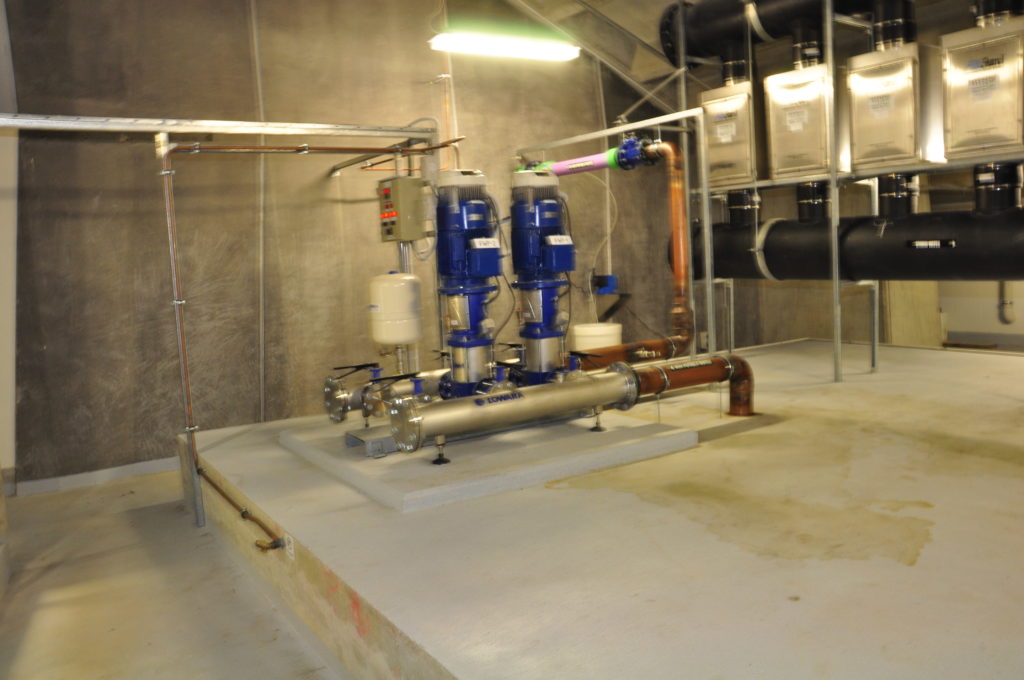
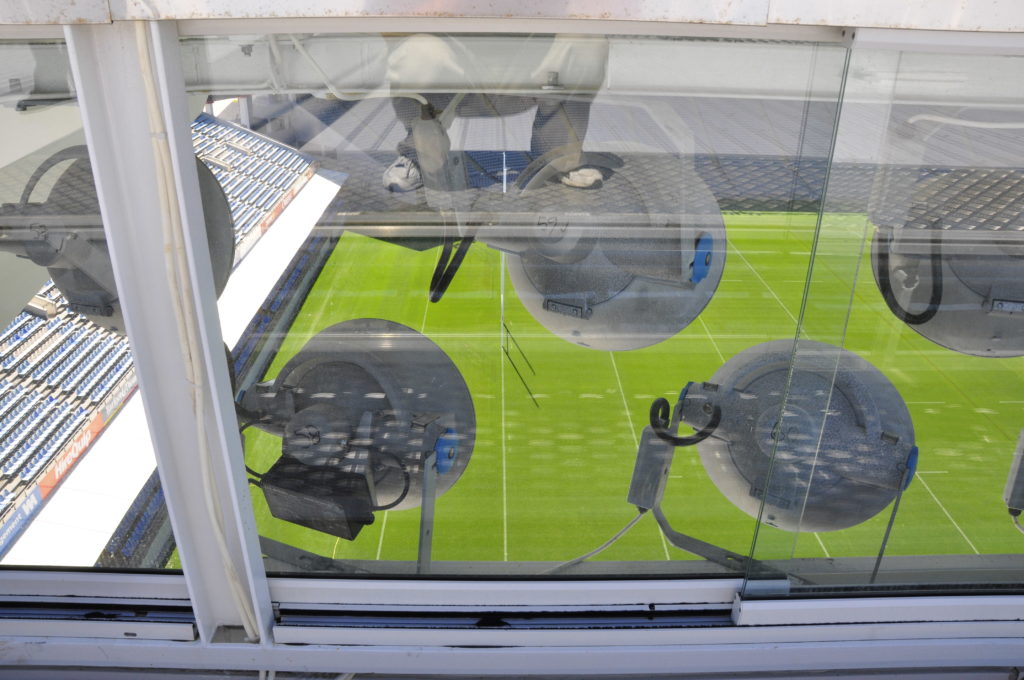
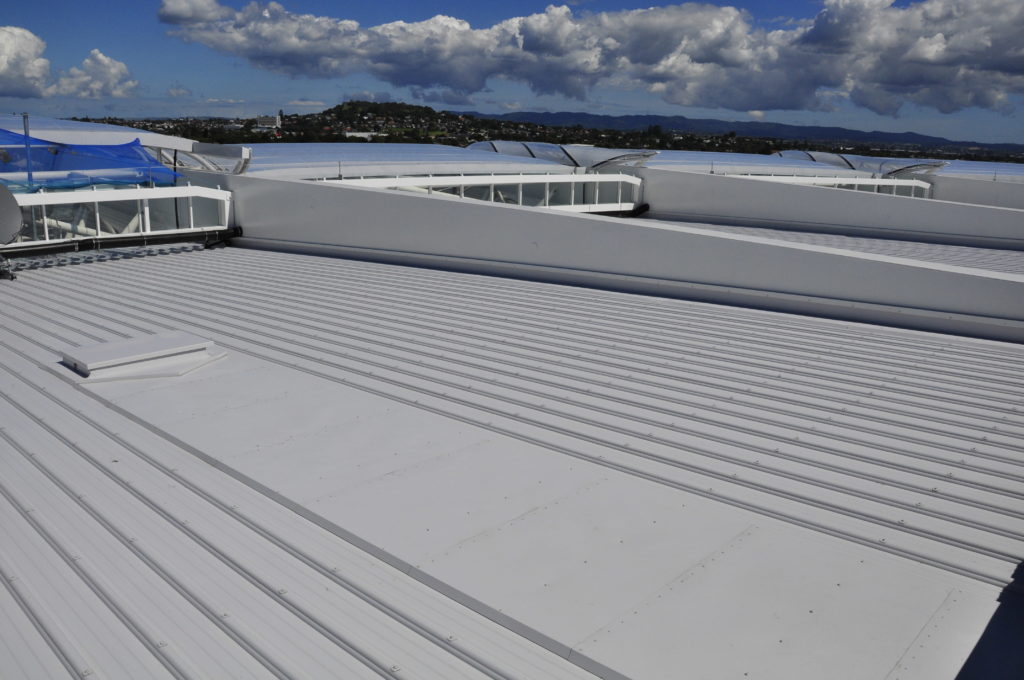
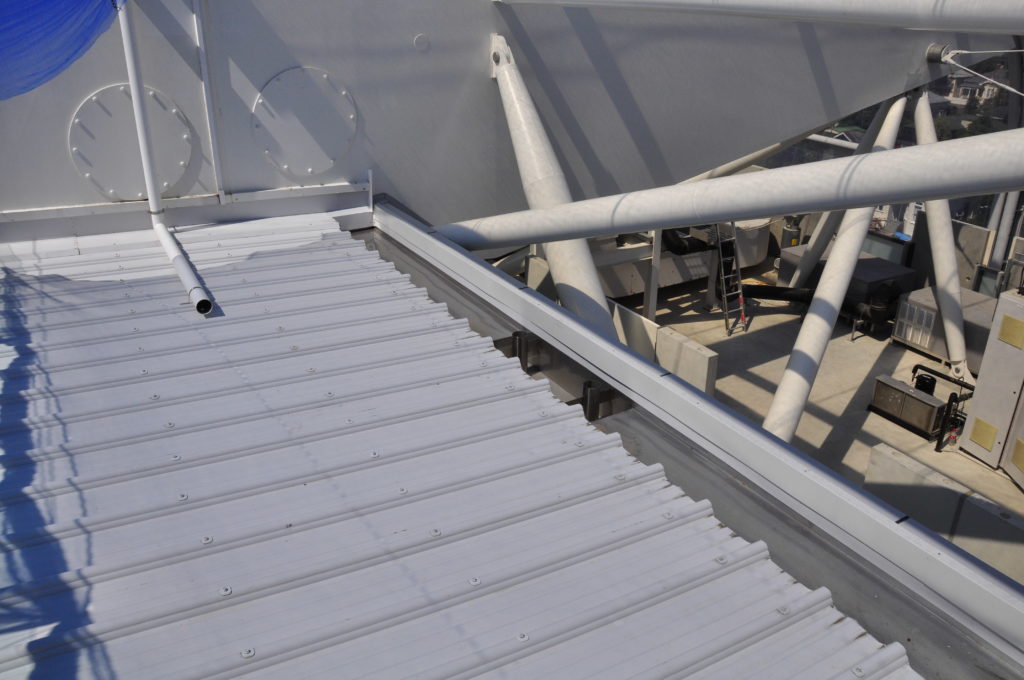
On a tour from the roof catchment area down to the reservoir tank in the basement, Craig Nicholson, the facilities manager, points out that the water heading into the concrete tank goes through six filters.
The working chamber of these filters is made of a dual-wall geotextile fabric liner which is allied with a fossil rock or zeolite absorbent. The hydrous silicate minerals of calcium, sodium, and aluminum which make up zeolite have cavities that enable them to take up and yield up water easily. Such filters are designed to collect particulates and debris, as well as metals and petroleum hydrocarbons (oils and greases).
Says Nicholson: “The water harvesting system, tanks, and filters are all run by the Building Management System (BMS). There is Cat 7 wiring through the stand and computers control everything such as lights and water. The system has to be on for you to be able to turn the lights on. It’s all programmed and adds a layer of complexity to the operation even while it allows for complete control. There are motion sensors on the lights and daylight sensors on the security lights around the grounds.
“We are going to get mobile devices so we can computer-control the building while on the move around it.”
Other examples of commercial buildings in New Zealand that harvest roof-collected rainwater for similar purposes are Wellington’s Conservation House (65,000 litres) and Meridian Energy Building (16,000 litres), LandCare Research Building in Auckland (50,000 litres), and NZ Post’s Waikato Mail Centre in Hamilton (75,000 litres) where 15 percent of the total roof area is used to collect rainwater in three tanks, estimated to cover all annual toilet flushing requirements.


